Intro
This project functions as an inquiry into the possible negotiation of the ruling majority’s communitarian ideology, through a study of the Opposition’s spatial practices. It examines how an ideological consensus with the citizenry produces – and is in turn reproduced by – the built infrastructure the state has set up in the name of community life. The universality of “Heartland” community infrastructure, for instance, allows the ruling party to exert a virtual monopoly over grassroots activities and many other aspects of everyday life, engendering further ideological consensus among the governed.
The Opposition employ different tactics; they walk, appropriating HDB flats via transient void deck consultations, setting up time-based systems through which they conduct their weekly welfare events and distributions. In a bid to express their own brand of community outreach, they fluidly traverse multiple flats within their constituencies to reach out to their constituents. Then, given a political terrain with marginal spatial allowance for Opposition political outreach, how more can alternative political voices negotiate dominant ideologies through space? And more importantly, how can the everyday citizen resist and potentially play a role in enriching Singapore’s – or any similar – political landscape?
Design Exploration
Months of research have culminated in the decision to use aesthetic architectural imagery to further the impact of the Opposition’s political outreach. Think Hong Kong’s umbrellas or Thailand’s rubber duckies when visualizing the convergence of real space and virtual space; the construction of Instagram images and Tik Tok videos.
If we were to re-evaluate the Opposition’s existing strategies, we would see an attempt to capitalize on everyday spaces – HDB void decks in particular – and everyday objects such as foldable chairs and tables, and transient partitions. What if we could enhance this attempt, much like the way Hong Kong protesters revolutionized the way the world viewed an object as simple as the umbrella, through an artful and aesthetic agglomeration of everyday objects? What if we could proliferate imagery of their agglomeration over social media, much as media outlets had sensationalized that of existing social movements? At the same time, what if we could also circumvent political regulations and make the assembly and disassembly of the objects as transient as the Opposition’s welfare programs and Meet-the-People’s sessions?
Future Outcome
It is my hope that my exploration acts as a springboard for future experimentation related to the use of media and imagery in furthering political causes.
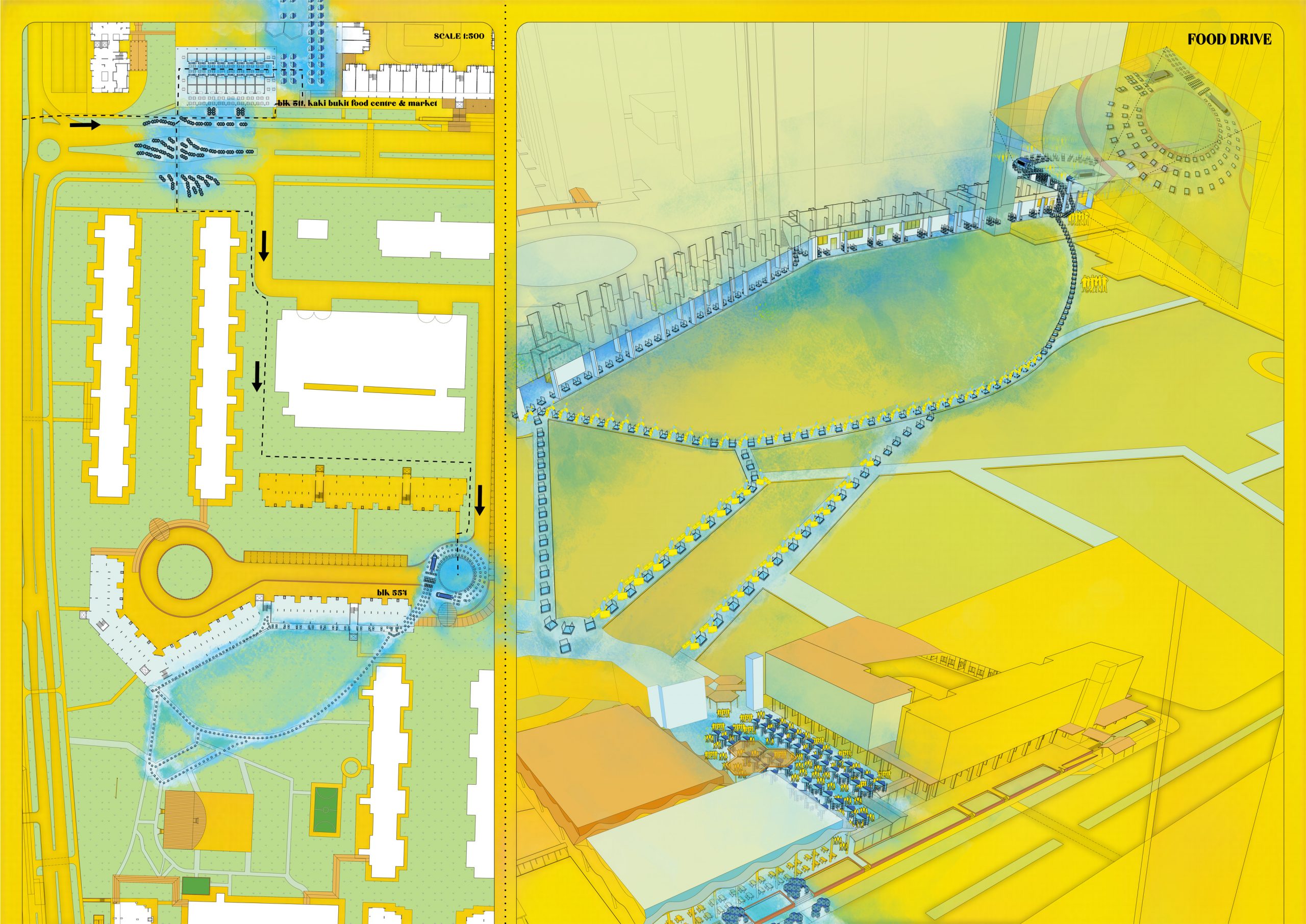
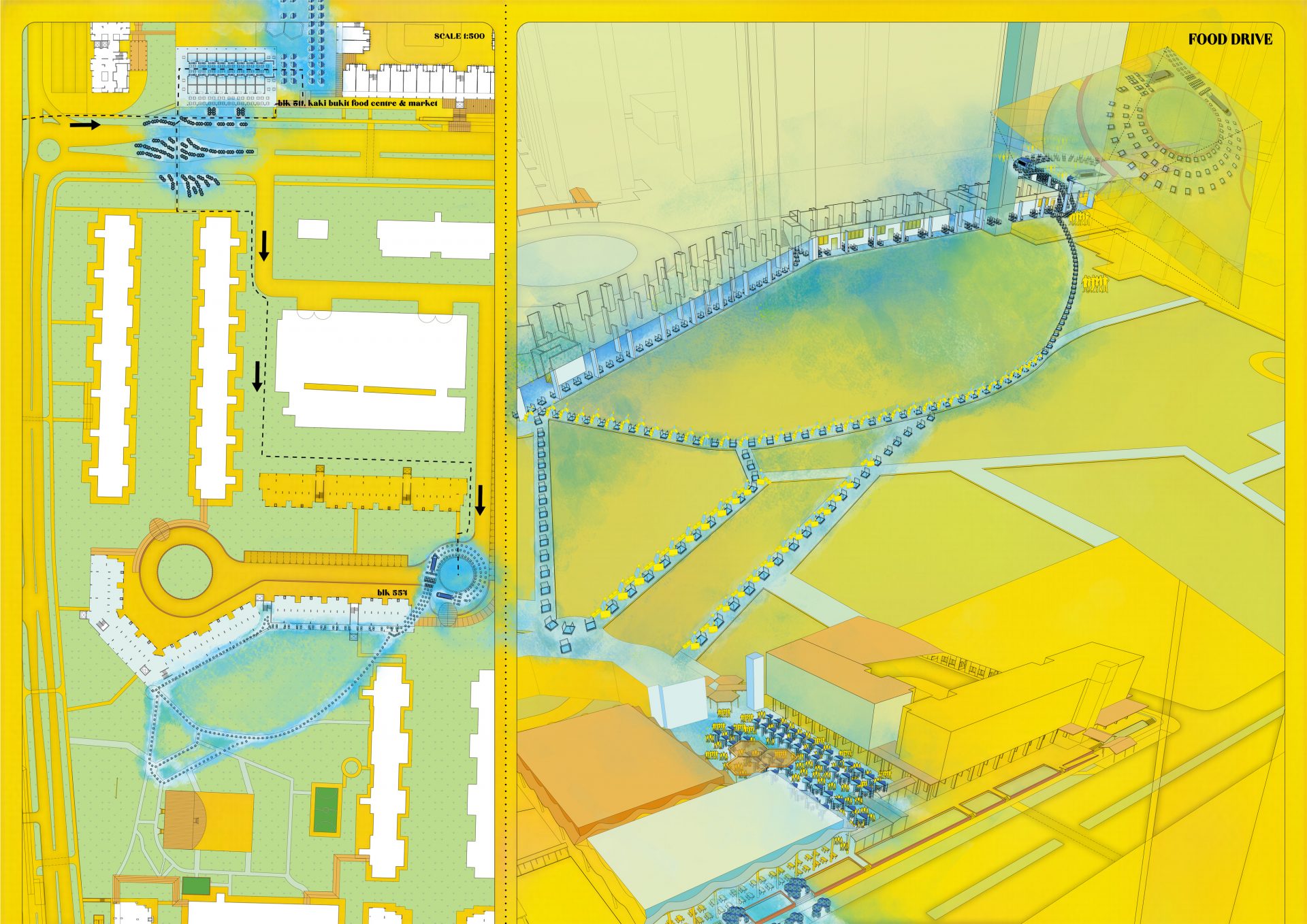
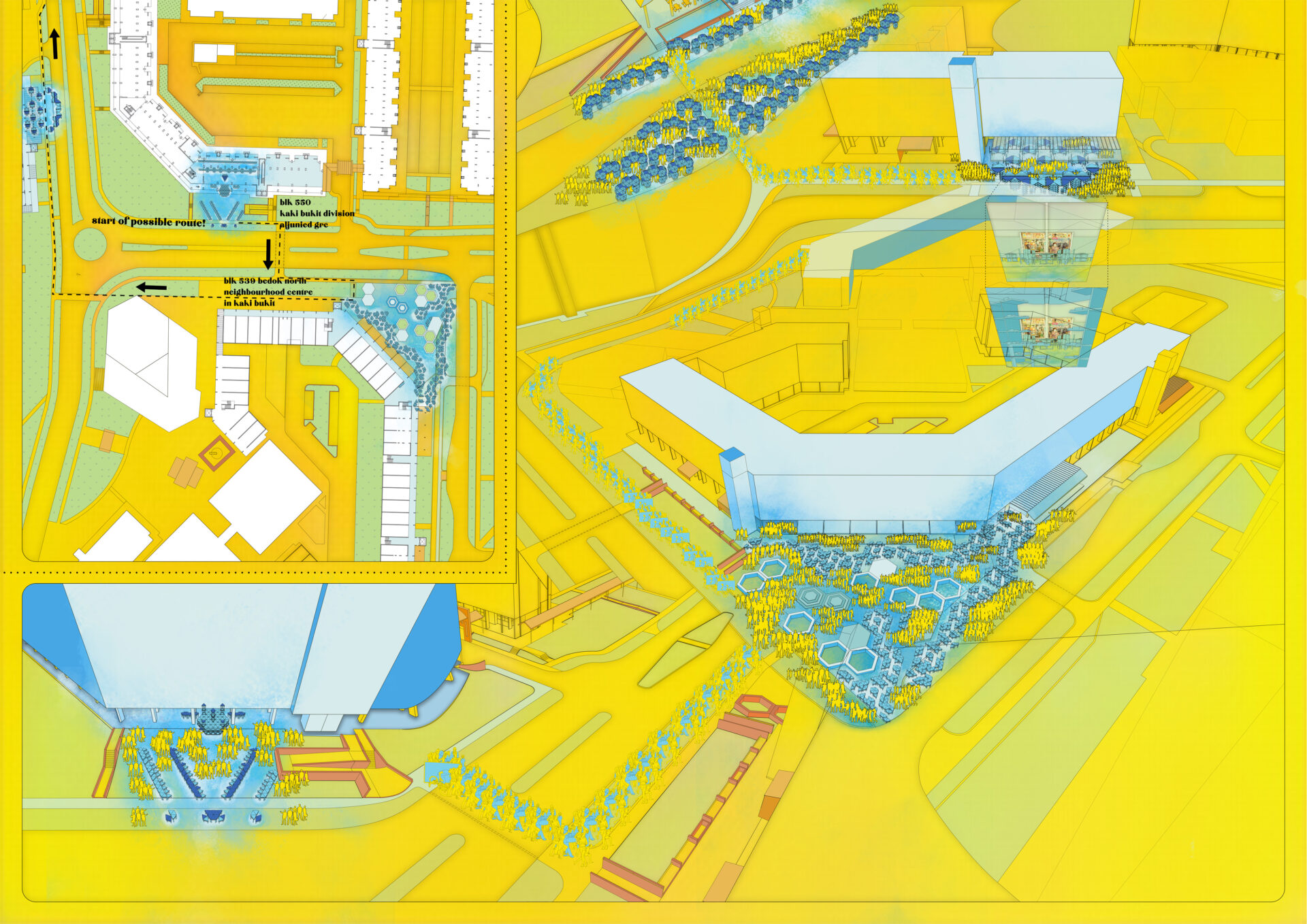
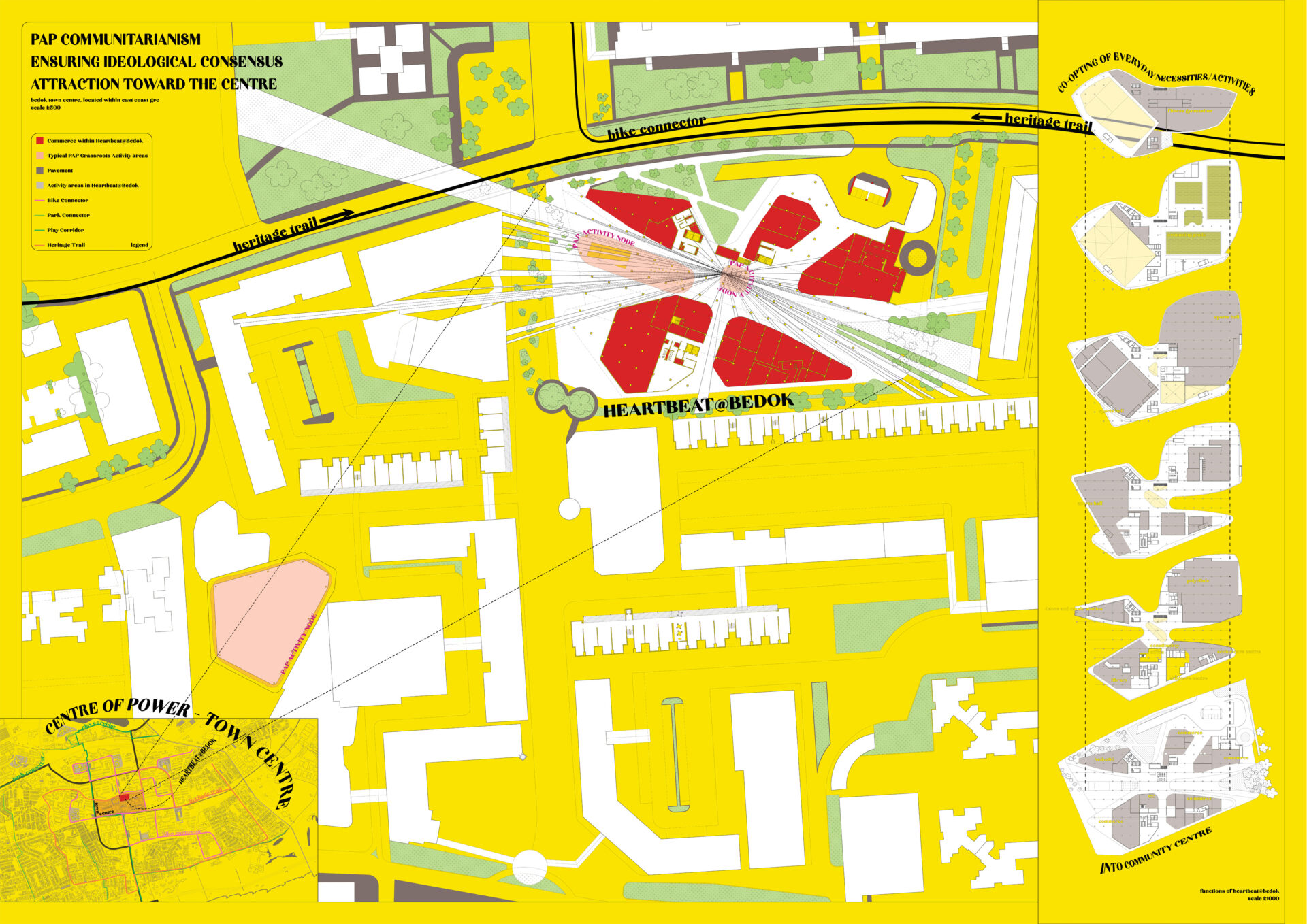
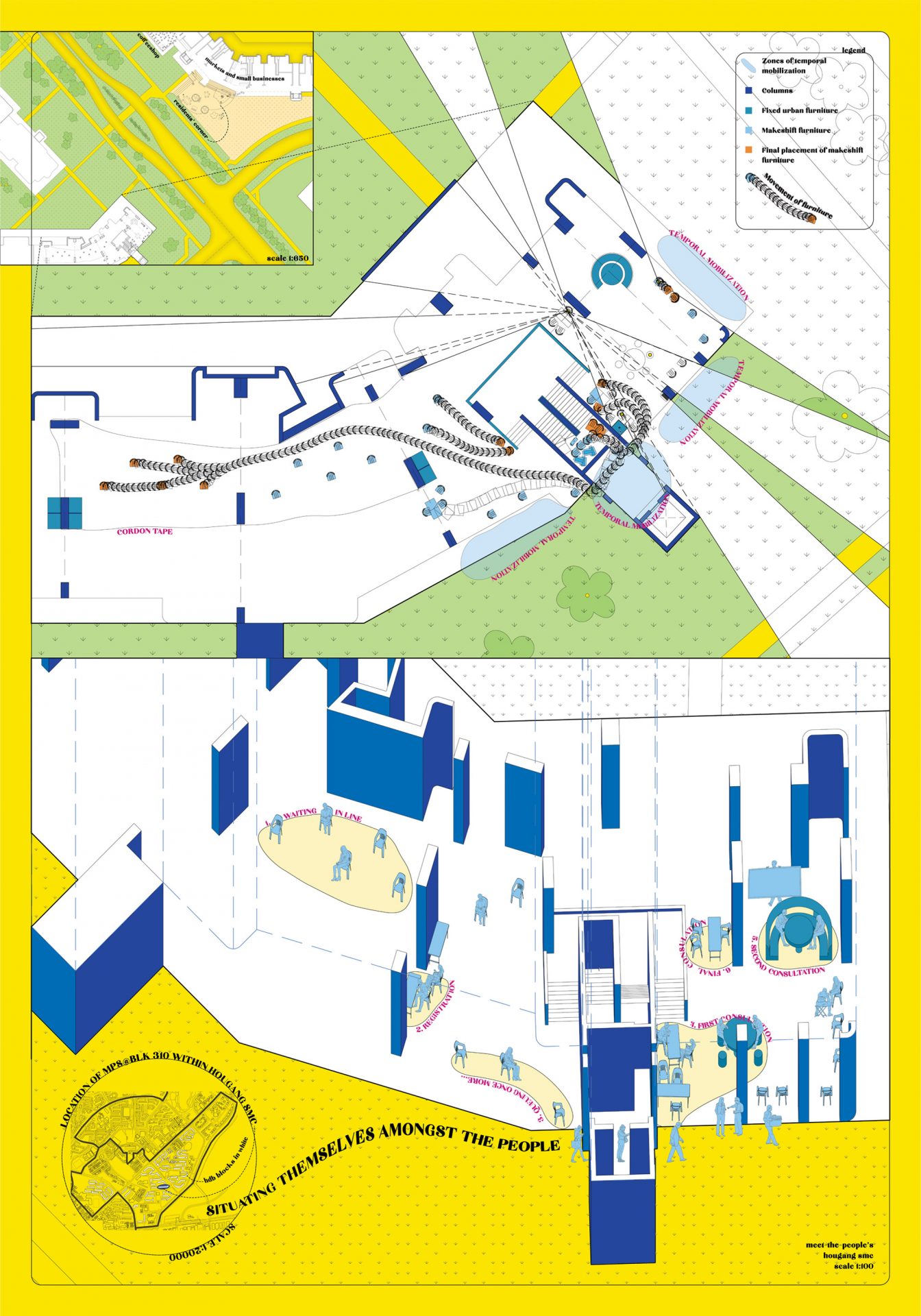
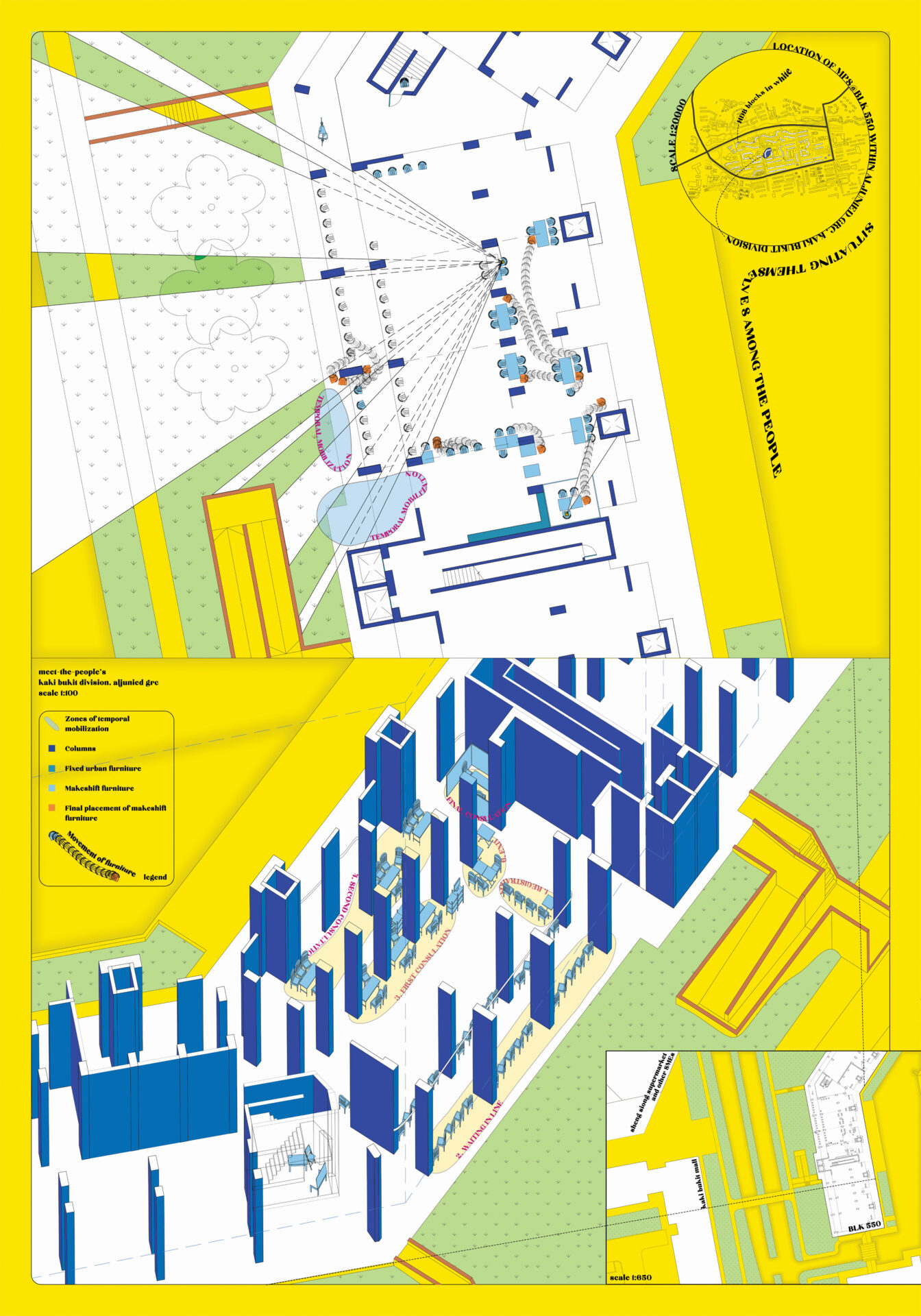
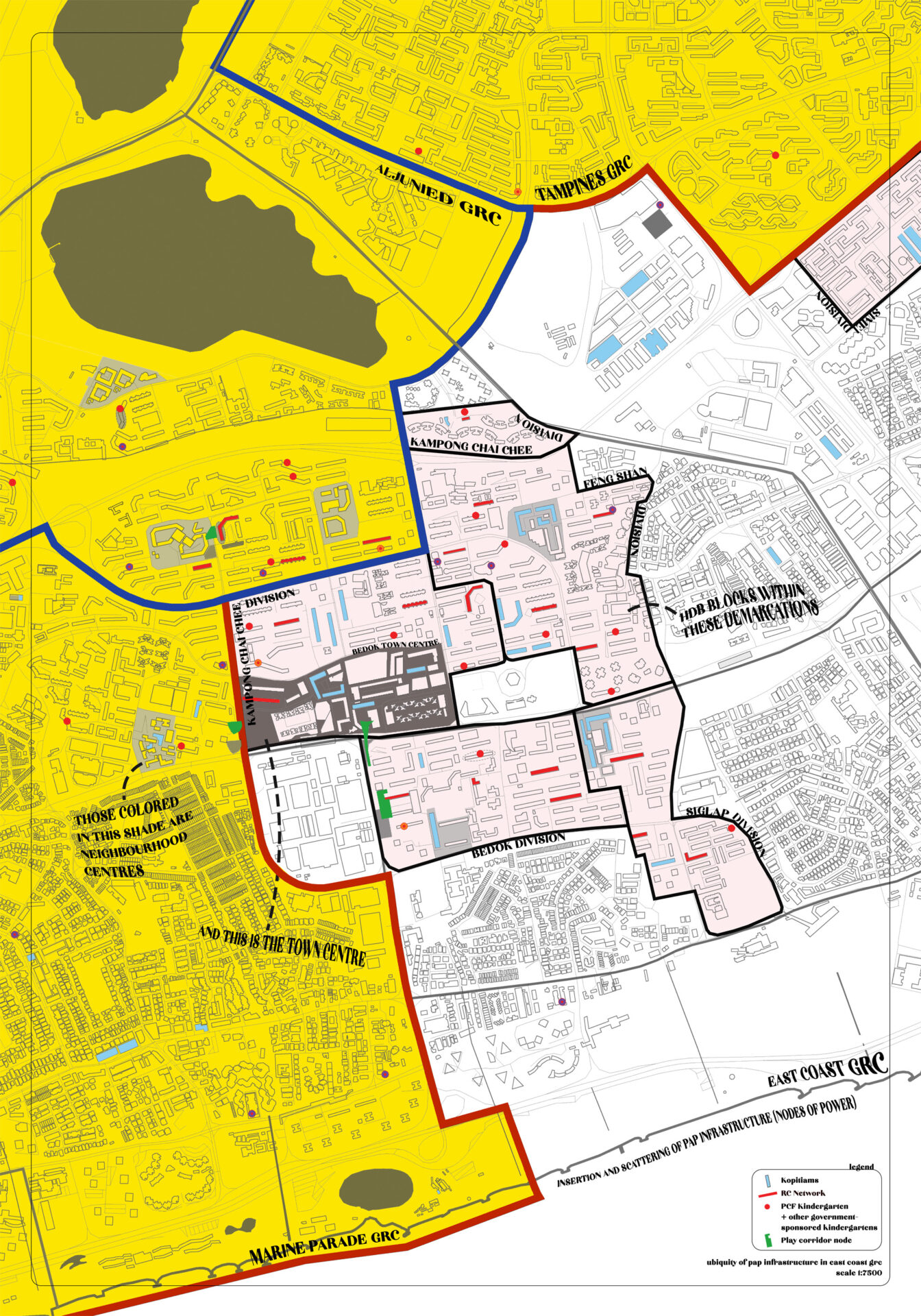
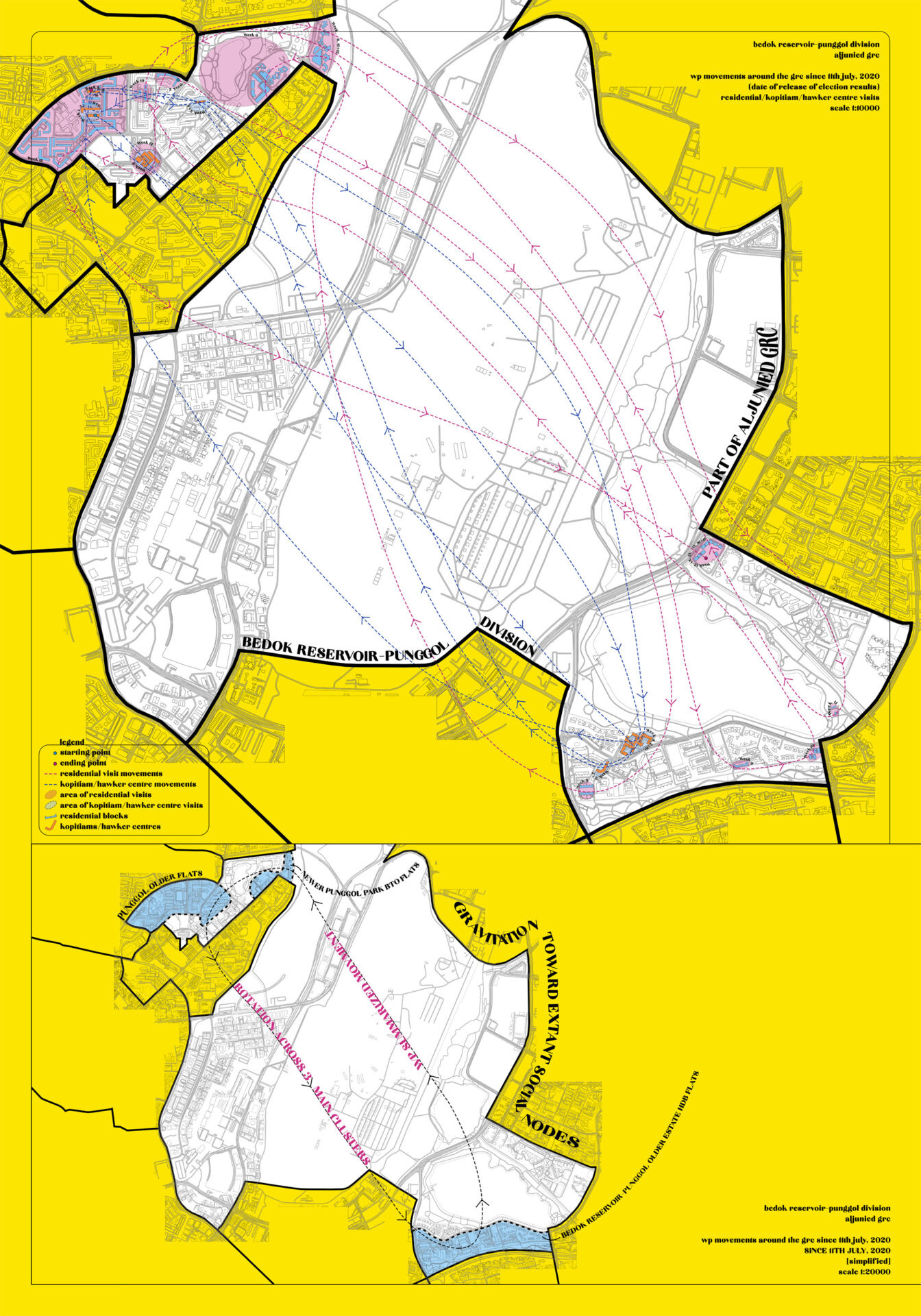
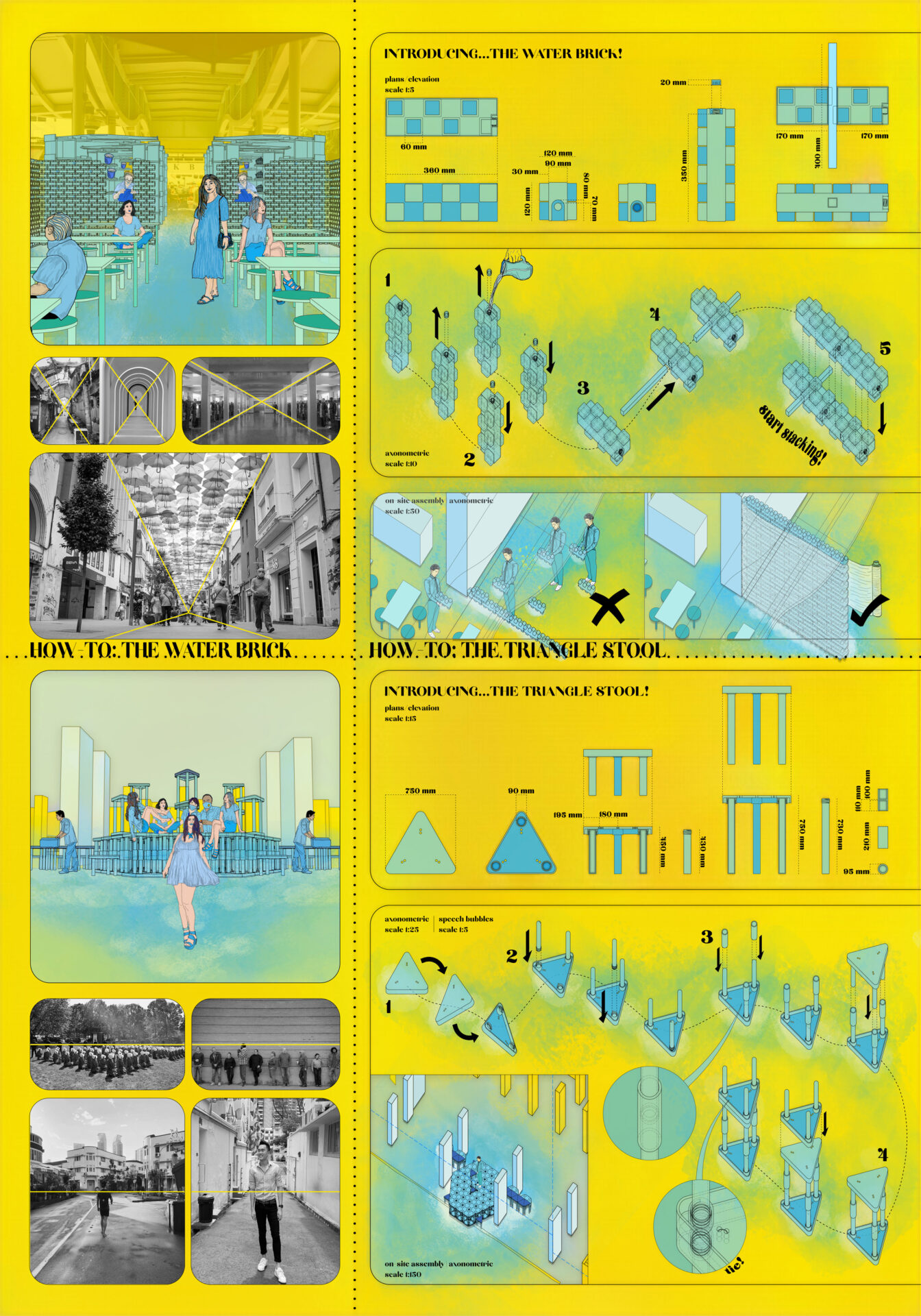
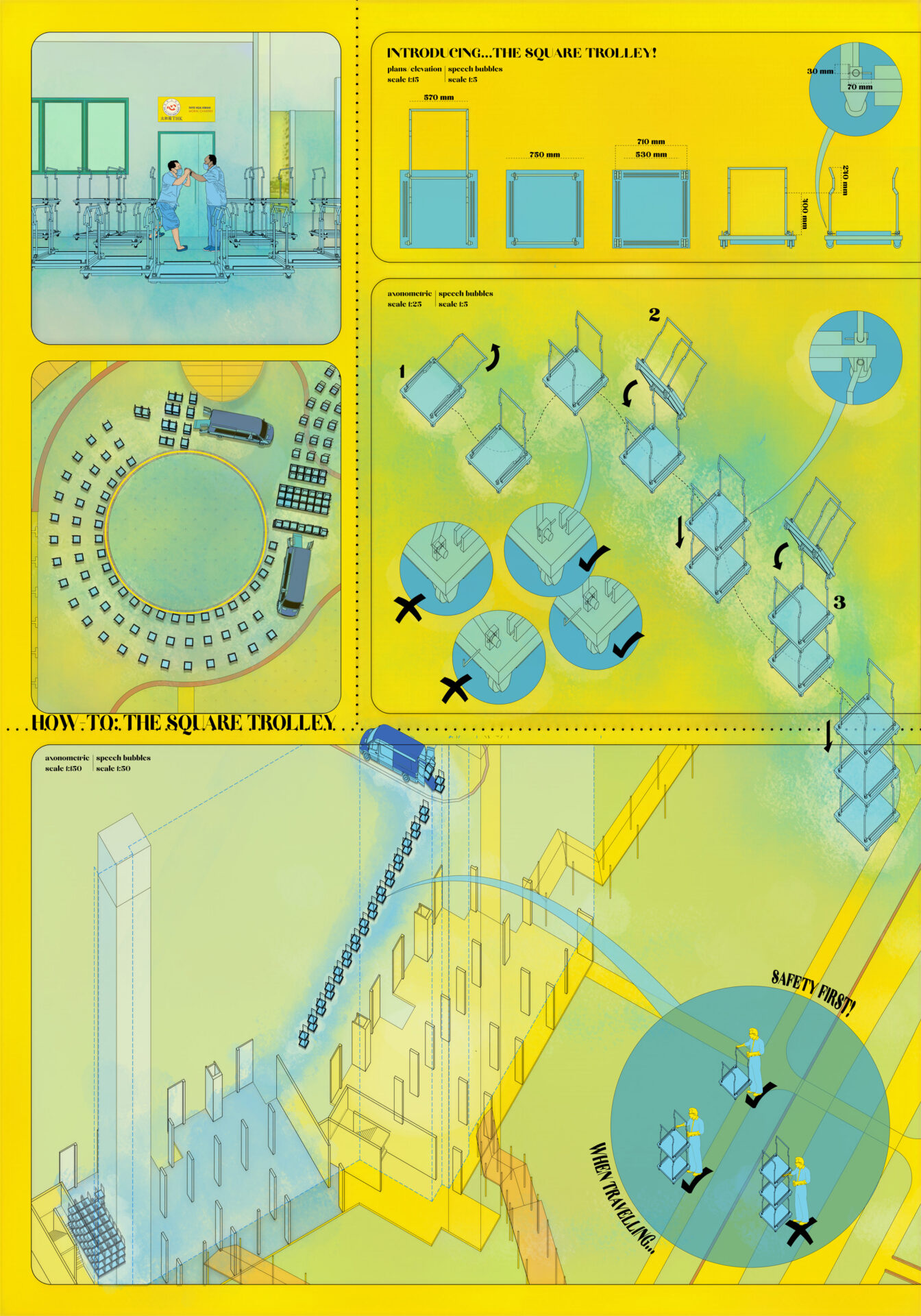
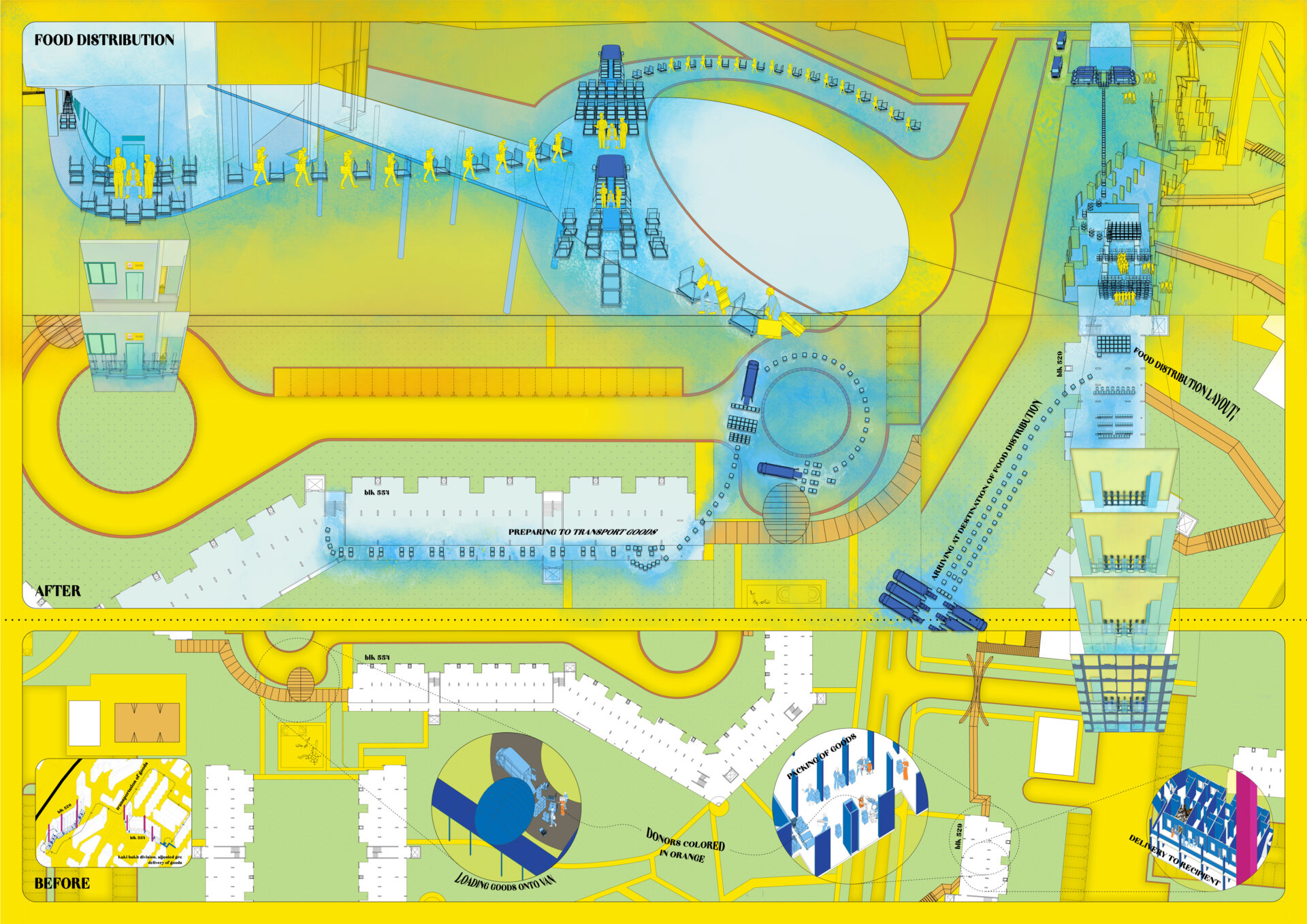
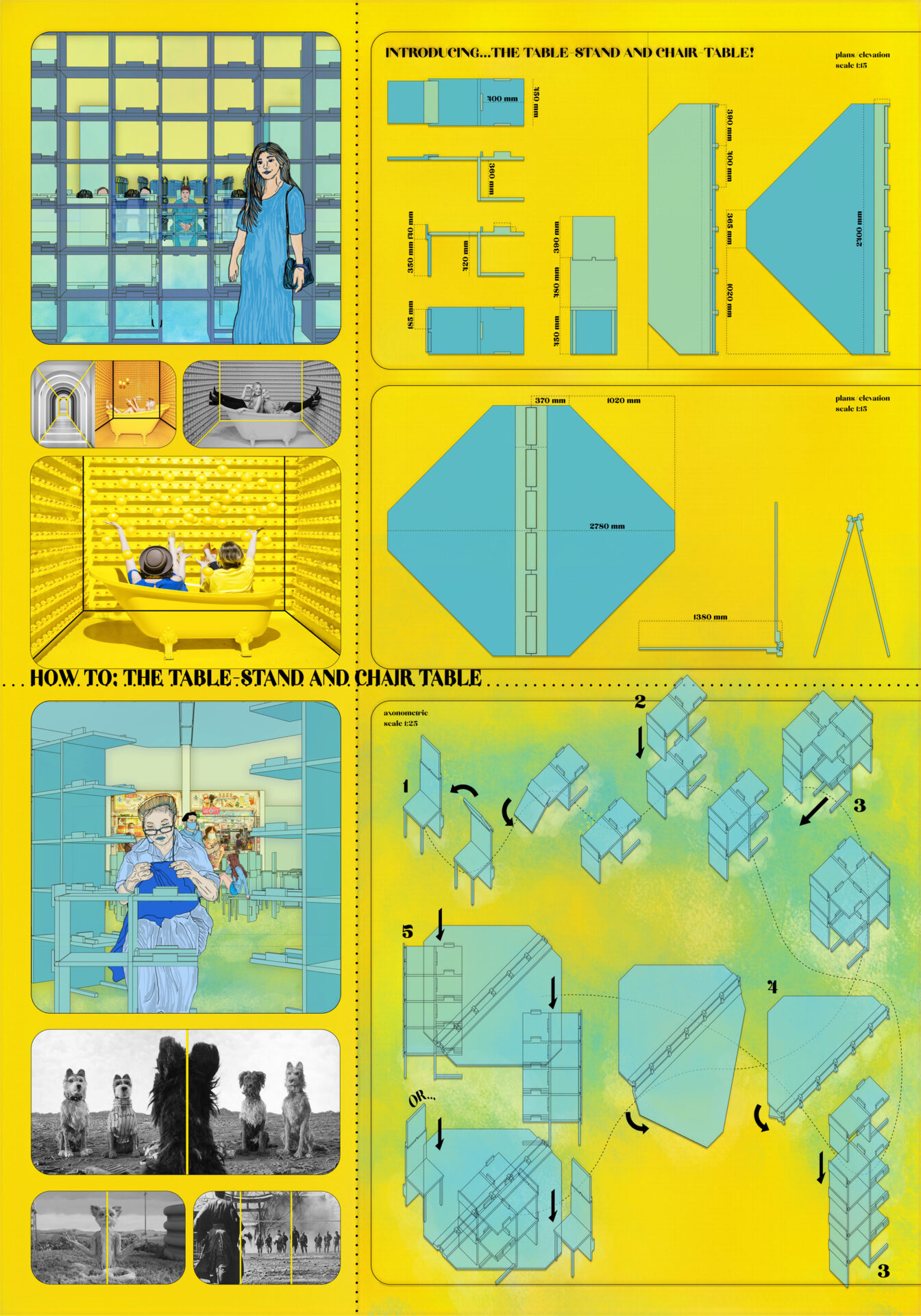
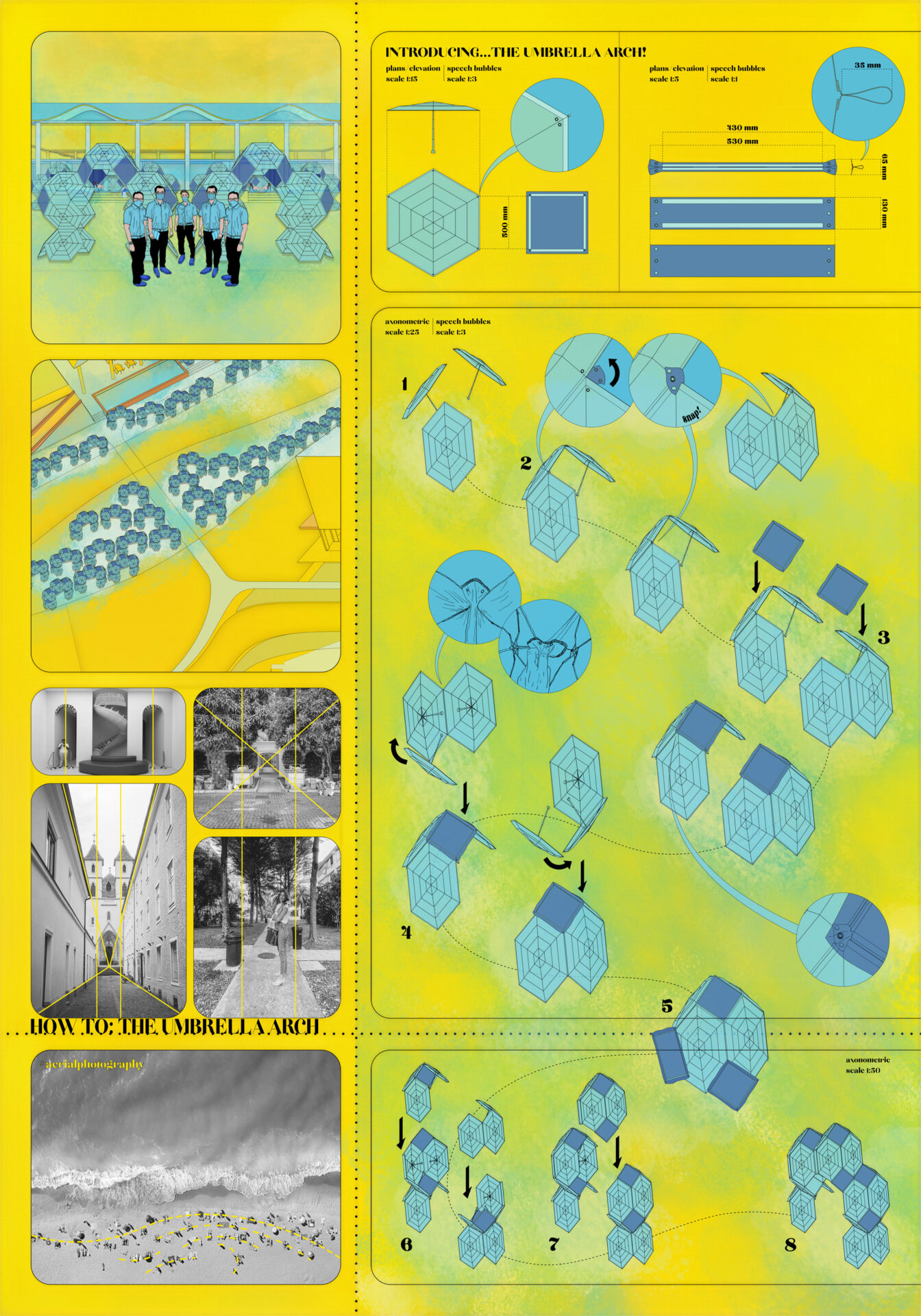
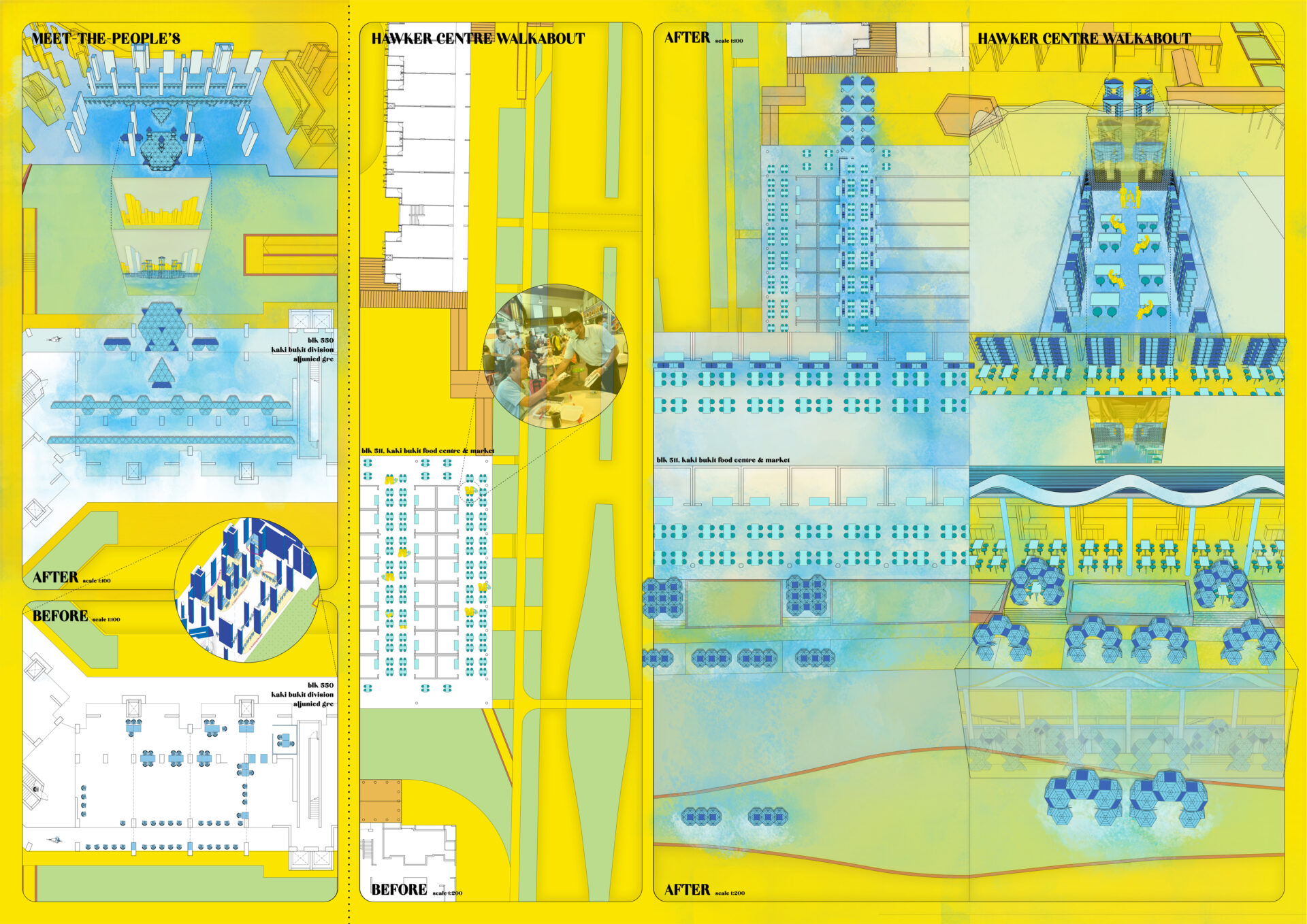
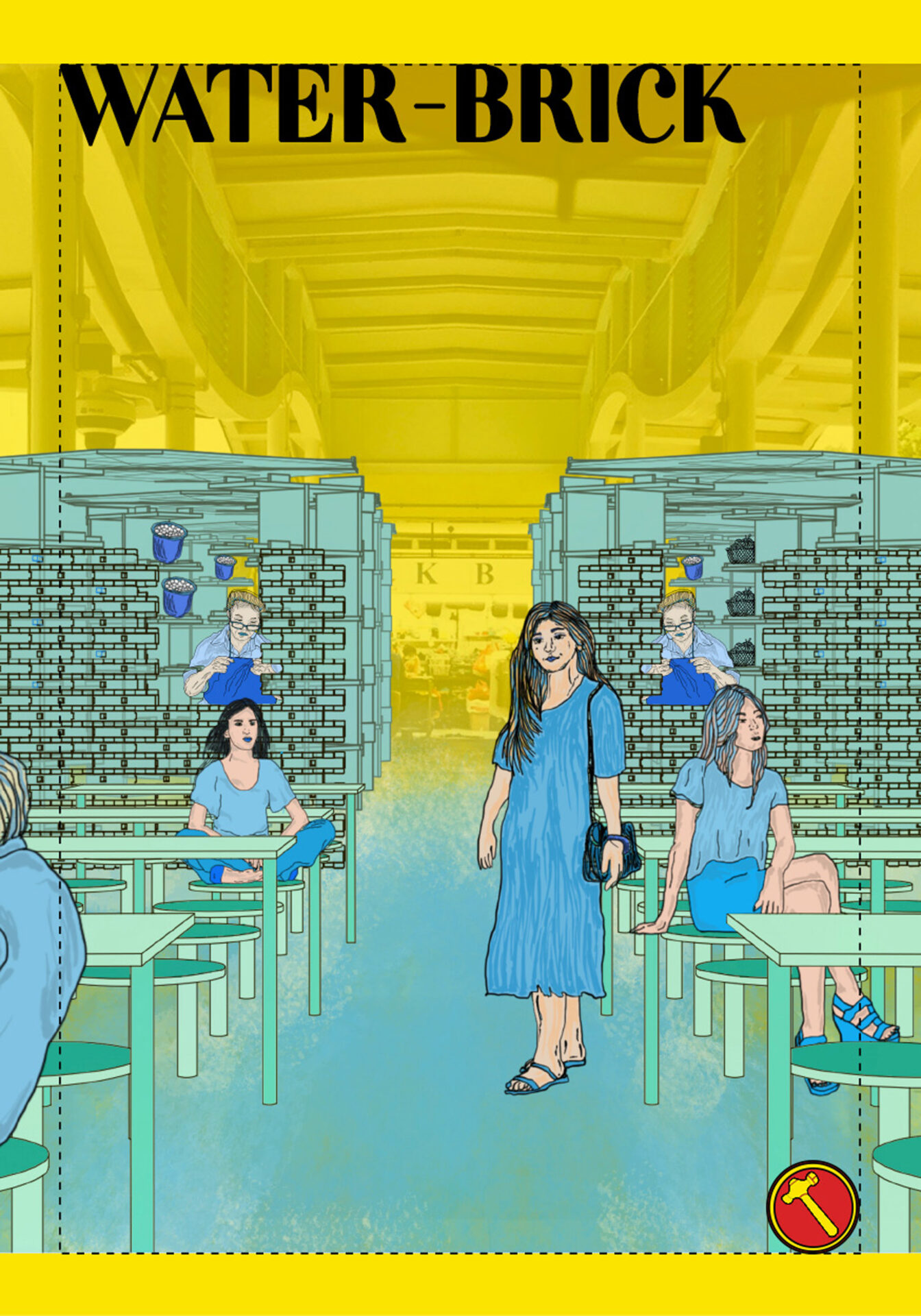
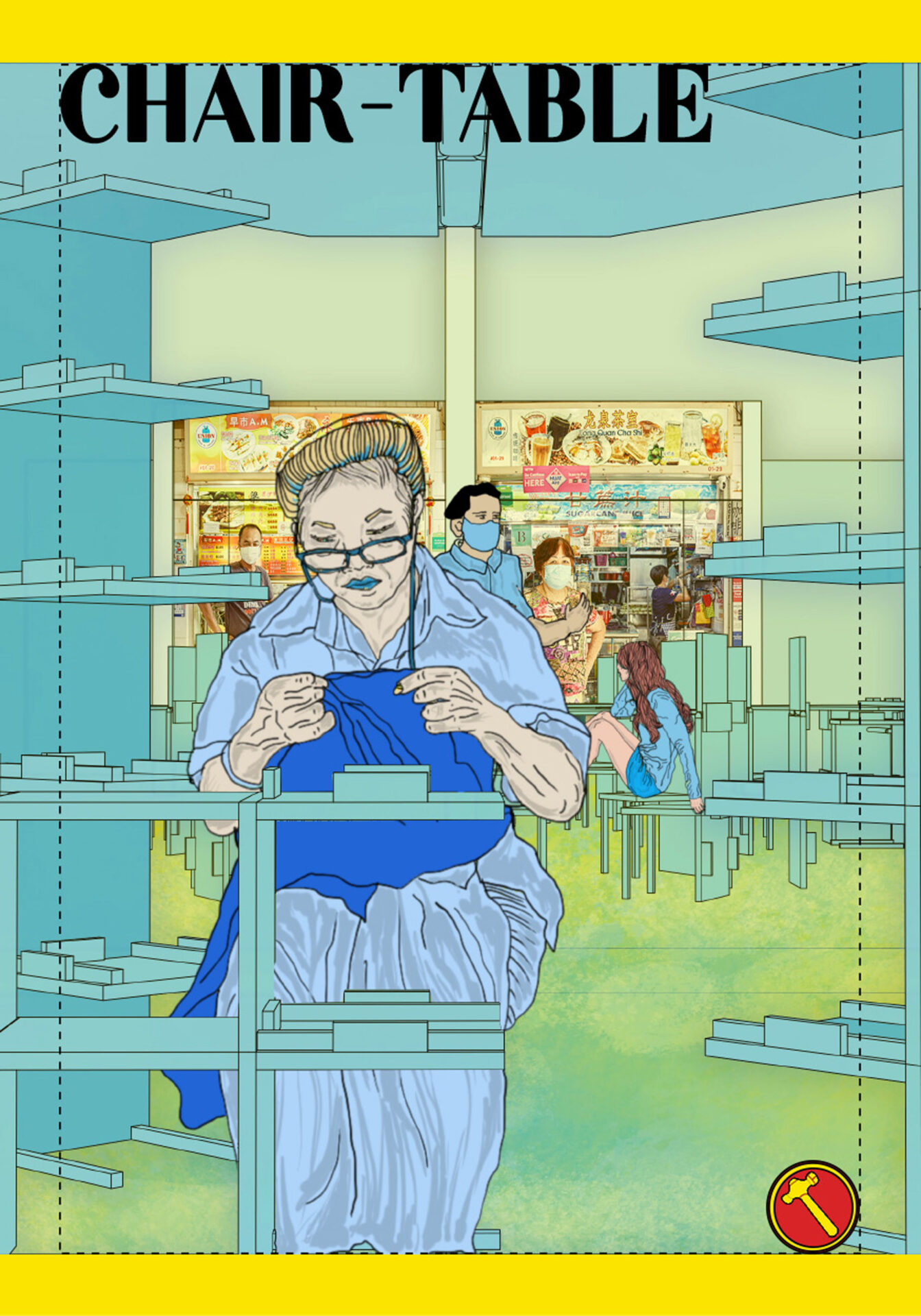
Supervisor's comments:
Learning from political campaigns conducted by opposition parties in Singapore: reaching out people instead of attracting them with a centralized building facility, the challenge of the project: To Win an Election, was to use architectural knowledge, principle and aesthetics to envision an alternative form of the campaign in the age of network society. By mobilizing people for processions and social services, and by producing and distributing furniture and smaller appliances to be re-assembled for a construction of larger structures, the architecture only emerges in conjunction with the activities and events. The moments of emergence are captured in videos and images to be dispatched through social media with particular narratives. The design materializes not a static but a generative form of architecture without a single building.
- Assoc. Prof. Tsuto Sakamoto